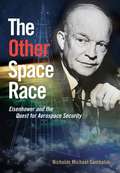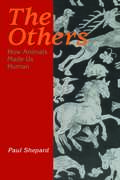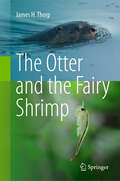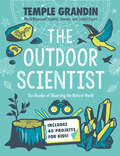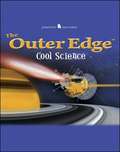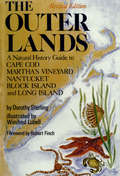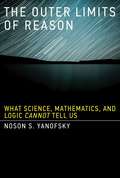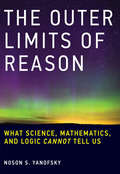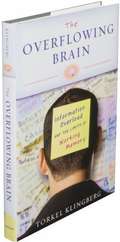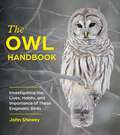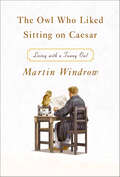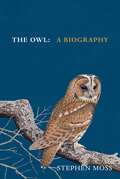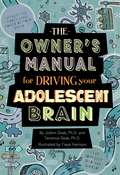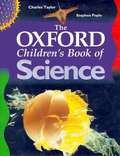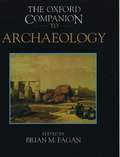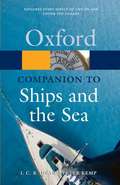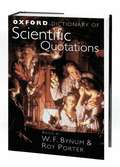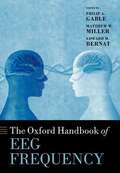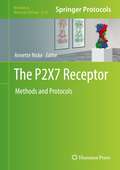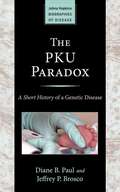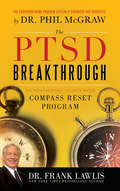- Table View
- List View
The Other Space Race: Eisenhower And The Quest For Aerospace Security
by Nicholas Michael SambalukThe Other Space Race is a unique look at the early U. S. space program and how it both shaped and was shaped by politics during the Cold War. Eisenhower’s "New Look” expanded the role of the Air Force in national security, and ultimately allowed ambitious aerospace projects, namely the "Dyna-Soar,” a bomber equipped with nuclear weapons that would operate in space. Eisenhower’s space policy was purely practical, creating a strong deterrent against the use of nuclear arms against the United States. With the Soviet launch of Sputnik in 1957, the political climate changed, and space travel became part of the United States’ national discourse. Sambaluk explores what followed, including the scuttling of the "Dyna-Soar” program and the transition from Eisenhower’s space policy to John Kennedy’s. This well-argued, well-researched book gives much needed perspective on the Cold War’s influence on space travel and it’s relation to the formation of public policy.
The Others: How Animals Made Us Human
by Paul ShepardPaul Shepard has been one of the most brilliant and original thinkers in the field of human evolution and ecology for more than forty years. His thought-provoking ideas on the role of animals in human thought, dreams, personal identity, and other psychological and religious contexts have been presented in a series of seminal writings, including Thinking Animals, The Tender Carnivore and the Sacred Game, and now The Others, his most eloquent book to date.The Others is a fascinating and wide-ranging examination of how diverse cultures have thought about, reacted to, and interacted with animals. Shepard argues that humans evolved watching other animal species, participating in their world, suffering them as parasites, wearing their feathers and skins, and making tools of their bones and antlers. For millennia, we have communicated their significance by dancing, sculpting, performing, imaging, narrating, and thinking them. The human species cannot be fully itself without these others.Shepard considers animals as others in a world where otherness of all kinds is in danger, and in which otherness is essential to the discovery of the true self. We must understand what to make of our encounters with animals, because as we prosper they vanish, and ultimately our prosperity may amount to nothing without them.
The Otter and the Fairy Shrimp
by James H. ThorpThis book presents information on common-to-rare organisms from around the world that inhabit freshwater habitats. The first six chapters focus on organisms from the very small (e.g., protozoa, zooplankton, and fairy shrimp) to the huge (e.g., hippos, freshwater sharks, and giant turtles), while the last four chapters provide information on aquatic ecosystems (lakes, streams, caves, and wetlands). Included in this last section are the physical nature of the system and how that influences the kinds of animals living there. This unique “nature” book, incorporating information from around the world on both aquatic systems and organisms, is written to attract the interest of a wide group of non-academic readers.
The Outdoor Scientist: The Wonder of Observing the Natural World
by Temple GrandinFrom New York Times bestselling author and world-renowned scientist and autism spokesperson Temple Grandin comes a book about exploring the world around us, asking questions, and making sense of what we see--with 40 fun outdoor activities that promote independent thinking, which kids can enjoy all year round!What are the aerodynamics of skipping stones or the physics of making sandcastles? Do birds use GPS to navigate their migratory routes? In this book, Dr. Temple Grandin, an inventor and world-renowned scientist, introduces readers to geologists, astrophysicists, oceanographers, and many other scientists who unlock the wonders of the natural world. She shares her childhood experiences and observations, whether on the beach, in the woods, working with horses, or gazing up at the night sky. This book explores all areas of nature and gives readers the tools to discover even more on their own.With forty projects to give readers a deeper understanding of the world around them, from the depths of space to their own backyard, this is a perfect read for budding scientists, inventors, and creators! Praise for The Outdoor Scientist:"Grandin&’s words are a rallying cry for budding scientists and she serves as a role model for young readers with autism. This is an important STEM and STEAM resource for every collection." --School Library Journal "The book is chock-full of information . . . the kind a nature-loving child will be thrilled to discover. An invitation to young readers to observe, enjoy, and learn about the world around us all." --Kirkus Reviews
The Outer Edge: Classic Investigations of the Paranormal
by Tom Genoni Barry Karr Joe NiekellInvestigations into celestial portents, extraterrestrials, fortune telling, and visions of death.
The Outer Edge: Cool Science
by Henry Billings Melissa BillingsEnergize low-level readers with the series based on amazing, true stories. Lower readability series joins the Wild Side/Critical Reading family. Emphasis is on reading nonfiction. Critical thinking questions prepare students for state and national tests. The Outer Edge builds on the success of Jamestown's popular Wild Side and Critical Reading series, enticing struggling readers with amazing, strange, and unbelievable nonfiction, now at a lower reading level. Comprehension questions reinforce literal understanding, while critical thinking questions encourage students to speculate about author's purpose, make inferences,identify cause and effect, support conclusions, and make predictions. Best of all, this program is designed to reinforce state reading standards for your most struggling readers. Reading Level 2-4. Interest Level 6-12.
The Outer Lands: A Natural History Guide to Cape Cod, Martha's Vineyard, Nantucket, Block Island, and Long Island
by Robert Finch Dorothy Sterling Winifred LubellDid you know that horseshoe crabs have been around for 200 million years? That mussels "spin" long anchor lines and climb steep slopes with them? Do you know what a "Beetlebung" tree is? This is all part of Dorothy Sterling's fascinating description of The Outer Lands, and the plants and animals that inhabit this peninsula and chain of islands along our New England coast.
The Outer Limits of Reason: What Science, Mathematics, and Logic Cannot Tell Us
by Noson S. YanofskyMany books explain what is known about the universe. This book investigates what cannot be known. Rather than exploring the amazing facts that science, mathematics, and reason have revealed to us, this work studies what science, mathematics, and reason tell us cannot be revealed. In "The Outer Limits of Reason," Noson Yanofsky considers what cannot be predicted, described, or known, and what will never be understood. He discusses the limitations of computers, physics, logic, and our own thought processes. Yanofsky describes simple tasks that would take computers trillions of centuries to complete and other problems that computers can never solve; perfectly formed English sentences that make no sense; different levels of infinity; the bizarre world of the quantum; the relevance of relativity theory; the causes of chaos theory; math problems that cannot be solved by normal means; and statements that are true but cannot be proven. He explains the limitations of our intuitions about the world -- our ideas about space, time, and motion, and the complex relationship between the knower and the known. Moving from the concrete to the abstract, from problems of everyday language to straightforward philosophical questions to the formalities of physics and mathematics, Yanofsky demonstrates a myriad of unsolvable problems and paradoxes. Exploring the various limitations of our knowledge, he shows that many of these limitations have a similar pattern and that by investigating these patterns, we can better understand the structure and limitations of reason itself. Yanofsky even attempts to look beyond the borders of reason to see what, if anything, is out there.
The Outer Limits of Reason: What Science, Mathematics, and Logic Cannot Tell Us
by Noson S. YanofskyAn exploration of the scientific limits of knowledge that challenges our deep-seated beliefs about our universe, our rationality, and ourselves.Many books explain what is known about the universe. This book investigates what cannot be known. Rather than exploring the amazing facts that science, mathematics, and reason have revealed to us, this work studies what science, mathematics, and reason tell us cannot be revealed. In The Outer Limits of Reason, Noson Yanofsky considers what cannot be predicted, described, or known, and what will never be understood. He discusses the limitations of computers, physics, logic, and our own thought processes.Yanofsky describes simple tasks that would take computers trillions of centuries to complete and other problems that computers can never solve; perfectly formed English sentences that make no sense; different levels of infinity; the bizarre world of the quantum; the relevance of relativity theory; the causes of chaos theory; math problems that cannot be solved by normal means; and statements that are true but cannot be proven. He explains the limitations of our intuitions about the world—our ideas about space, time, and motion, and the complex relationship between the knower and the known.Moving from the concrete to the abstract, from problems of everyday language to straightforward philosophical questions to the formalities of physics and mathematics, Yanofsky demonstrates a myriad of unsolvable problems and paradoxes. Exploring the various limitations of our knowledge, he shows that many of these limitations have a similar pattern and that by investigating these patterns, we can better understand the structure and limitations of reason itself. Yanofsky even attempts to look beyond the borders of reason to see what, if anything, is out there.
The Outer Planets: Uranus, Neptune and Pluto (Planet Guides)
by Duncan BrewerThis valuable beginners guide to the outer planets will offer lots of fascinating facts about the three farthest planets, Uranus, Neptune and Pluto. It talks about their satelites, moons, rings, and formation, age, mass, and other important facts. The book also offers a glimpse into the past and how the different planets were discovered by ancient and more recent astronomers. Also offers a glossary of terms and a bibliography of further reading.
The Overflowing Brain
by Elkhonon Goldberg Torkel KlingbergAs the pace of technological change accelerates, we are increasingly experiencing a state of information overload. Statistics show that we are interrupted every three minutes during the course of the work day. Multitasking between email, cell-phone, text messages, and four or five websites while listening to an iPod forces the brain to process more and more informaton at greater and greater speeds. And yet the human brain has hardly changed in the last 40,000 years. Are all these high-tech advances overtaxing our Stone Age brains or is the constant flood of information good for us, giving our brains the daily exercise they seem to crave? In The Overflowing Brain, cognitive scientist Torkel Klingberg takes us on a journey into the limits and possibilities of the brain. He suggests that we should acknowledge and embrace our desire for information and mental challenges, but try to find a balance between demand and capacity. Klingberg explores the cognitive demands, or "complexity," of everyday life and how the brain tries to meet them. He identifies different types of attention, such as stimulus-driven and controlled attention, but focuses chiefly on "working memory," our capacity to keep information in mind for short periods of time. Dr Klingberg asserts that working memory capacity, long thought to be static and hardwired in the brain, can be improved by training, and that the increasing demands on working memory may actually have a constructive effect: as demands on the human brain increase, so does its capacity. The book ends with a discussion of the future of brain development and how we can best handle information overload in our everyday lives. Klingberg suggests how we might find a balance between demand and capacity and move from feeling overwhelmed to deeply engaged.
The Owl Handbook: Investigating the Lives, Habits, and Importance of These Enigmatic Birds
by John SheweyCharismatic, intriguing, and misunderstood: The Owl Handbook provides a beautifully photographed, thoughtfully researched, and accessible guide to these complex, captivating creatures. Spot an owl that&’s long been watching your every move and darker aspects of its reputation may spring to mind: harbinger of doom, guides through the spirit world, merciless bird of prey. Mythology and superstitions have projected our fear of the unknown onto these mostly night-dwelling creatures. But these wondrous birds are so much more than shadows or silent glides through the night. In The Owl Handbook, lifelong birding enthusiast John Shewey leads us through an exploration of owls&’ cultural impact as seen in folklore and mythology, provides in-depth investigations of 19 owls of North America and a survey of 200 owls across the globe, and gives advice on how to respectfully observe and protect these enigmatic birds, brought to life by hundreds of full-color photographs.
The Owl Who Liked Sitting on Caesar: Living with a Tawny Owl
by Martin WindrowThis memoir of the relationship between a British military historian and a Tawny Owl is “a small masterpiece of animal literature . . . [a] perfect book” (The Wall Street Journal).Mumble was so much a part of my life in those days that the oddity of our relationship seldom occurred to me, and I only thought about it when faced with other people’s astonishment. When new acquaintances learned that they were talking to a book editor who shared a seventh-floor flat in a South London tower block with a Tawny Owl, some tended to edge away, rather thoughtfully . . . I tried to answer patiently, but I found it hard to come up with a short reply to the direct question ‘Yes, but . . . why?’; my best answer was simply ‘Why not?’Martin Windrow was a war historian with little experience with pets when he adopted an owl the size of a corncob. Adorable but with knife-sharp talons, Mumble became Windrow’s closest, if at times unpredictable, companion, first in a South London flat and later in the more owl-friendly Sussex countryside. In The Owl Who Liked Sitting on Caesar, Windrow recalls with wry humor their finer moments as well as the reactions of incredulous neighbors, the awkwardness of buying Mumble unskinned rabbit at Harrods Food Hall, and the grievous sense of loss when Mumble nearly escapes. Windrow offers a poignant and unforgettable reminiscence of his charmed years with his improbable pet, as well as an unexpected education in the paleontology, zoology, and sociology of owls.“A memoir of his friendship with this singular creature, interwoven with a natural history of her species . . . [It] is all the more affecting because of its gruff understatement.” —The New York Times Book Review“Pure joy. Martin Windrow shows us the essence of a wild animal in a story as informative as a scientific paper on the species Strix aluco, but much more fun to read.” —Elizabeth Marshall Thomas, author of A Million Years with YouIncludes photographs and illustrations
The Owl: A Biography (The Bird Biography Series #5)
by Stephen Moss'BEAUTIFULLY, A BOOK ABOUT BIRDS' The Sunday Times | 'ENGAGING AND EYE-OPENING' The Countryman Uncover the life of owls through this beautiful guide to these secretive and charismatic birds from the bestselling author of The Robin, The Wren, and The Swan.Owls are among the most mysterious birds in the world. Their hauntingly beautiful calls and mostly nocturnal habits have long captured our collective imagination, inspiring more superstitions, folktales, and myths than any other group of birds. Seven species of owl - the tawny, little, barn, long-eared, short-eared, snowy and eagle owl - can be found in the British Isles (out of sixteen different kinds across Europe). They have lived alongside people for thousands of years, yet we still know so little about their day-to-day lives.Discover their fascinating lives, from the moment they first hatch, to the way they hunt their prey and how they raise the next generation. Explore the rich folklore they've inspired around the world and learn how, with a bit of luck, you can catch a glimpse of them yourself.With beautiful illustrations throughout, and expert birdwatching tips, this eye-opening biography reveals the hidden secrets of one of the world's most famous and beloved birds.
The Owner’s Manual for Driving your Adolescent Brain
by JoAnn Deak Terrence Deak<p>Tweens and Teens! Think you know everything about your brain? Think again! <p>Your brain is in its second decade, and that means you have the opportunity to blaze your own trail by shaping your brain, building its strengths, and avoiding dangers with the decisions you make. Your brain is an amazing vehicle that will take you through every one of your life's experiences. Wouldn't it be good to have an owner's manual? <p>The Owner's Manual for Driving Your Adolescent Brain is packed with the goods on glia and the news about neurons, with a cool way to test your brain power and the scoop on how it's OK to make mistakes―they'll make you stronger, if you use them as an opportunity to learn. It's all about training your brain to help youbecome the very best version of yourself!</p>
The Oxford Children's Book of Science
by Charles Taylor Stephen PopleFrom lightning to lasers and from dandelions to DNA, this inviting book travels through every area of science, explaining simply and entertainingly the major processes, forces and structures that shape the world of nature. Starting with the basics and moving on to challenging ideas from bacteria to the Milky Way, Charles Taylor and Stephen Pople tie every scientific concept to everyday issues children can relate to. While describing how a hologram is created, for example, the authors trick their readers into a full-fledged explanation of how light is produced and disseminated; rock concerts and a soccer ball are used as examples in discussions of electronics and airflow. The Oxford Children's Book of Science is a treat for browsers, and the glossary of key scientific terms and the alphabetical index are ideal research and study tools.
The Oxford Companion to Archaeology
by Brian M. FaganThe Companion is a book of contemporary science with strong roots in the humanities and social sciences, written by active scholars with broad experience in the field and the laboratory. They present the latest advances and discoveries in archaeology.
The Oxford Companion to Ships and the Sea (2nd edition)
by I. C. B. Dear Peter KempThe most comprehensive and authoritative reference book of its kind, The Oxford Companion to Ships and the Sea is a completely revised and updated edition of a classic volume that was first published in 1976, to huge acclaim. It brings together more than 2,600 entries on every imaginable aspect of the seas and the vessels that sail on them, from shipbuilding, yachting, diving, and marine mammals, to tidal power, piracy, and the literature and language of the sea. The Companion includes authoritative and fascinating entries on maritime history, including its greatest naval battles, like Pearl Harbor and Trafalgar, its most well-known ships, and its most famous individuals, both real and fictional. This second edition provides significant new material on topics that have come to prominence in recent times, such as oceanography and marine archaeology. Key contributions on these subjects include climate change, environmental issues, marine pollution, and marine wildlife. Among the many brand new entries to this edition are up-to-the-minute articles on underwater vehicles, tsunamis, warfare at sea, the Economic Exclusion Zone, and ship preservation. Entries are fully cross-referenced, and the text is now illustrated with over 260 detailed drawings, making it more accessible than ever before. It will prove an essential point of reference for anyone with a professional or amateur interest in the seas, from yachtsmen, maritime historians, and oceanographers, to naval architects, environmentalists, and armchair sailors.
The Oxford Dictionary of Scientific Quotations
by Roy Porter W. F. BynumThe original words announcing great scientific discoveries, from the first 'Eureka!' to the cloning of Dolly the sheep, can all be found in this fascinating addition to the world-famous Oxford Quotations series. An essential reference tool, put together over fifteen years with the assistance of a distinguished team of specialist advisers, it includes full author descriptions, exact sources, and a word-finding index for easy reference. Scholarly but accessible, it also presents the human face of science, as scientists reflect on achievements and failures in their own lives and those of others. For example, you've probably already hear Darwin's own thoughts on natural selection, but how about his assessment of the pros and cons of marriage? From Archimedes to Einstein and beyond, the Oxford Dictionary of Scientific Quotations charts the progress of the great ideas of science. It is an engaging and surprising read for all lovers of science, history, or wit.
The Oxford Handbook of EEG Frequency (Oxford Library of Psychology Series)
by Matthew Miller Philip Gable Edward BernatThe use of electroencephalography (EEG) to study the human mind has seen tremendous growth across a vast array of disciplines due to increased ease of use and affordability of the technology. Typically, researchers study how the magnitude of the waves changes over time or how the rhythm (frequency) of the waves changes over time. <p><p>The Oxford Handbook of EEG Frequency is arguably the first book to comprehensively describe the ways to study how the frequency of the waves changes over time and how changes in frequency are linked to cognitive, affective, and motor processes.
The Oysters of Locmariaquer
by Eleanor ClarkWinner of the National Book Award“What an elegant book this is, starting with that most elegant of creatures, the Belon oyster. . . . [Clark’s] fantastic blending of science and art, history and journalism, brings the appetite back for life and literature both.” — Los Angeles Times Book ReviewOn the northwest coast of France, just around the corner from the English Channel, is the little town of Locmariaquer (pronounced "loc-maria-care"). The inhabitants of this town have a special relationship to the world, for it is their efforts that maintain the supply of the famous Belon oysters, called les plates ("the flat ones"). A vivid account of the cultivation of Belon oysters and an excursion into the myths, legends, and rich, vibrant history of Brittany and its extraordinary people, The Oysters of Locmariaquer is also an unforgettable journey to the heart of a fascinating culture and the enthralling, accumulating drama of a unique devotion.
The P2X7 Receptor: Methods and Protocols (Methods in Molecular Biology #2510)
by Annette NickeThis detailed volume covers diverse aspects of P2X7 receptor analysis, ranging from its molecular structure to related pharmacological and immunological tools, via its analysis in heterologous expression systems as well as assays using primary cells and whole animal models. After three introductory chapters that focus on its structure, ligands, and physiological functions, the book details the generation of antibody and nanobody tools for P2X7 receptors, provides protocols for the analysis of expressed P2X7 receptors with a focus on their electrophysiological analysis, as well as protocols for the investigation of P2X7 down-stream signaling in immune cells by flow cytometry. Mouse models and procedures suited to investigate P2X7-mediated effects in other primary cells and in vivo are also explained. Written for the highly successful Methods in Molecular Biology series, chapters include introductions to their respective topics, lists of the necessary materials and reagents, step-by-step, readily reproducible laboratory protocols, and tips on troubleshooting and avoiding known pitfalls. Authoritative and practical, The P2X7 Receptor: Methods and Protocols is a valuable reference not only for the growing community fascinated by this unusual ion channel but also for a broad readership interested in ion channels or purinergic receptors.
The PCR Revolution: Basic Technologies and Applications
by Stephen A. BustinThe invention of the polymerase chain reaction (PCR) won the Nobel Prize in Chemistry in 1994 and remains one of the most important scientific discoveries of the twentieth century. More than 50,000 researchers in the United States use PCR replication technology, and yet a book has not been published on the subject in more than ten years. In this book, Dr. Stephen A. Bustin, a world-renowned PCR expert, examines in detail the latest innovations and the overall impact of PCR on many areas of molecular research. The book contains personal reflections, opinions, and comments by leading authorities on the many applications of the PCR and how this technology has revolutionized their respective areas of interest. This book conveys the ways in which PCR has overcome many obstacles in life science and clinical research and also charts the PCR's development from time-consuming, low throughput, non-quantitative procedure to today's rapid, high throughput, quantitative super method.
The PKU Paradox: A Short History of a Genetic Disease (Johns Hopkins Biographies of Disease)
by Diane B. Paul Jeffrey P. BroscoHow did a disease of marginal public health significance acquire paradigmatic status in public health and genetics? In a lifetime of practice, most physicians will never encounter a single case of PKU. Yet every physician in the industrialized world learns about the disease in medical school and, since the early 1960s, the newborn heel stick test for PKU has been mandatory in many countries. Diane B. Paul and Jeffrey P. Brosco’s beautifully written book explains this paradox.PKU (phenylketonuria) is a genetic disorder that causes severe cognitive impairment if it is not detected and treated with a strict and difficult diet. Programs to detect PKU and start treatment early are deservedly considered a public health success story. Some have traded on this success to urge expanded newborn screening, defend basic research in genetics, and confront proponents of genetic determinism. In this context, treatment for PKU is typically represented as a simple matter of adhering to a low-phenylalanine diet. In reality, the challenges of living with PKU are daunting.In this first general history of PKU, a historian and a pediatrician explore how a rare genetic disease became the object of an unprecedented system for routine testing. The PKU Paradox is informed by interviews with scientists, clinicians, policymakers, and individuals who live with the disease. The questions it raises touch on ongoing controversies about newborn screening and what happens to blood samples collected at birth.
The PTSD Breakthrough: The Revolutionary, Science-Based Compass RESET Program
by Frank Lawlis<p>We are facing a hidden and growing epidemic. More than a million veterans and everyday citizens have been affected with Post Traumatic Stress Disorder as a result of a traumatic event or personal experience. And until now, there has been little understanding of how the disorder truly takes hold and how to reverse its destruction. Finally, a breakthrough approach has been discovered. <p>Previously PTSD was treated as a psychiatric disorder only, but new scientific research shows that biological factors play just as an important of a role, specifically brain and soft-tissue damage underlying the root causes of the disorder. The PTSD Breakthrough is the first book to describe the true causes of PTSD and provide an effective program for overcoming the disorder. There is hope. <p>Through the research conducted by Dr. Lawlis and his colleagues, for the first time those who suffer from PTSD, as well as their families and loved ones, will discover that this disorder can be treated and healed, and that our veterans and all who suffer from PTSD can regain true peace in their lives. </p>
